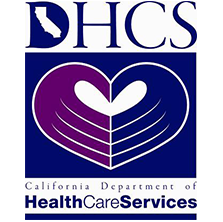Alcohol is so intertwined with our day-to-day lives and so widely accepted that we rarely take a second to consider the implications of that and what it means for quitting. We have drinks while watching the game, drinks to celebrate weddings, birthdays or promotions, drinks at networking events, and the list goes on.
It’s just one of those things we’ve collected deemed as ok.
But alcohol is a toxin and normalizing a toxin has consequences.
Per the National Institute on Alcohol Abuse and Alcoholism (NIAAA):
- Nearly 15 million people ages 12 and older had an alcohol use disorder (AUD)
- In 2010, alcohol misuse cost the United States $249.0 billion
- An estimated 95,000 people die from alcohol-related causes annually, making alcohol the third-leading preventable cause of death in the United States
So, what to do? How to quit alcohol?
Is Alcohol Addictive?
For starters, it’s important to understand the nature of the beast so to speak.
Alcohol is addictive, consuming it releases those feel-good chemicals called endorphins into the brain which bind to opiate receptors. Part of the pull is related to chasing those feelings of euphoria that are the byproduct.
Alcohol addiction is known as an alcohol use disorder or AUD and is defined as such by the NIAAA; “a medical condition characterized by an impaired ability to stop or control alcohol use despite adverse social, occupational, or health consequences. It encompasses the conditions that some people refer to as alcohol abuse, alcohol dependence, alcohol addiction, and the colloquial term, alcoholism. Considered a brain disorder, AUD can be mild, moderate, or severe”.
Signs & Symptoms of an Alcohol Addiction
Alcohol addiction manifests in a variety of ways that tend to grow increasingly more noticeable as times goes on:
- Drinking more than intended or for longer than intended
- Wanted to cut back or quit but couldn’t
- Spending an excessive amount of time drinking or suffering from its effects
- Intense cravings that take over your thoughts
- Drinking, or being hungover, interfere with personal responsibilities – i.e., to family, friends, school, work, etc.
- Continue to drink despite obvious issues it’s causing with family and friends
- Forgoing activities you once loved so you can drink instead
- Getting yourself into dangerous situations like drunk driving or unprotected sex
- Carrying on drinking even though it’s making you depressed or worsening other health problems
- Developing a tolerance so you have to drink more to get the same effects as before
- Feeling withdrawal symptoms when the alcohol wears off
How severe addiction is on the mild, moderate or severe scale is based on how many of those criteria are met with mild being 2-3, moderate being 4-5 and severe being 6 or more.
How to Quit Alcohol
While it’s certainly possible to quit drinking on your own, it’s a tough and arduous grind to go it alone. Quitting and getting sober is made easier when you have a support system and structure, which are two things rehab provides in spades.
Before any treatment can start though, it’s critical that you detox first. Detox is simply the process of ridding your body of alcohol and the reason you’d want to do it under the supervision and guidance of addiction specialists, like with our team at Safe Harbor, is so we can help you manage the withdrawal symptoms.
Once you break the physical addiction to alcohol through detox, it’s time to tackle the mental side of addiction, which is what inpatient rehab is all about.
We develop an individualized, custom treatment program around your needs. Through evidence-based methods like cognitive behavioral therapy (CBT), dialectical behavior therapy (DBT), motivational enhancement therapy (MET) we work with you in both individual and group sessions to help you overcome alcoholism and develop a solid foundation upon which to build the rest of your life.
If you’re sick of alcohol, control your life or the life of a loved one, reach out to us at Safe Harbor to learn more about the options available to you.




